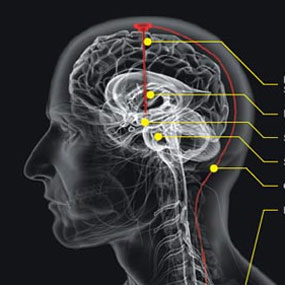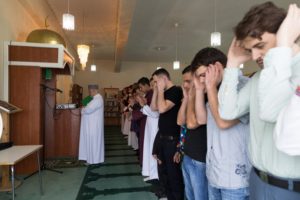Did you know the facts about Prayer and Medical Science?
– Medical science has proven the healing benefits of prayer.
– More than 60 medical schools in America are now teaching courses on religious and
spiritual issues, including the benefits of prayer.
– The American Cancer Society sites the positive effect of prayer on physical health.
Medical benefits of ritualistic Muslim Prayer called Salah or Salat in Arabic
Salat has been made compulsory on all believers in all situations. It is an activity which cannot be neglected under any circumstance. This obligation on us should not be regarded as a burden, but rather it should be cherished and appreciated. It is said that a pious person is one who enjoys their prayer.
Also Read: Egypt, Qatar Deliver Trump’s Gaza Ceasefire Proposal to Hamas
The Muslims who reach the age of puberty (with exceptions of: menstruating, being to ill or experiencing post-partum bleeding) have to pray to Allah (SWT) minimum five times a day. This Arabic word “Salah,” doesn’t only mean “prayer,” because “pray” basically means to address a prayer to God or another deity, according to the Oxford Dictionary. “Salah,” is a word with a broad meaning, which doesn’t only mean prayer, but also means goodness, righteousness and godliness. In Salah, we not only ask from Allah (SWT) but we also thank Him, praise Him and at the same time receive guidance from Him.
Salah in the true sense is programming or conditioning.
The prayer conditions us to stay away from forbidden and shameful actions, and encourages us to do righteous and sensible actions. Since we humans have no free will, this conditioning will help us and enable us to stay away from forbidden things, and enjoin on what is not forbidden. A healthy body requires three meals a day. Similarly, the spiritual soul requires five times Salah a day.
Besides attaining spiritual upliftment from performing one’s salat, one may also gain many physical and psychological benefits. Holy Prophet Muhammad (saw) is recorded in a hadith (Ibn Majah) stating that prayer is a cure for many diseases. The wisdom in this claim can be understood when assessing the physical benefits of the act of prayer.
The process of performing salat expects certain movements and actions, these actions performed at least five times a day have been found to equate to jogging or walking at a rate of three miles an hour. This is a basic level of exercise strongly advocated by doctors and members of the medical fraternity on a whole.
Also Read: Israeli Airstrikes Kill 54 Palestinians Across Gaza
The importance of exercise is undeniable, with potential benefits to the cardiac, respiratory, skeletal and muscular system. The dynamics of salat contribute to the improvement of all of these systems, with specific emphasis on the muscular and cardiac systems. Before we delve into detail discussion, it needs to be noted that the purpose of performing salaat should not be to obtain health benefits, but rather to fulfill a religious requirement. The fact that there are physical benefits associated with prayer comes as a blessing.
In salah, when we do Ruku that is: bow down, extra blood flows into the upper part of the body. The spine becomes supple and flexible, while the spinal nerves are nourished. This relieves backache and pain. This is a good posture for flatulence. Stretches lower back, thighs, and calves while blood gets pumped into the upper torso.
Bowing position tones stomach muscles, abdomen and kidneys. When we come back to the standing position (after Ruku), the blood which has entered into the upper part of the body, comes back to normal and the body is relaxed. As a result, this blood carries away toxins and releases tension.
When we do Sujud, which is basically the prostration to the ground with are eight parts of the body touching the floor, the forehead in on the ground which is the best position of salah. It is the most relevant part of salah. Daily, the human beings are propounded by electrostatic charges from the atmosphere, which gets perspirated in the central nervous system, which gets super saturated.
Also Read: School Bus Explosion in Pakistan Kills Five, Military Accuses India
These extra electrostatic charges, have to be dissipated and discharged, otherwise you will have: headache, neck ache, muscles spasms, etc. No wonder people regularly take tranquillizers and drugs, to relieve the pain. These electrostatic charges are dissipated and discharged, when the frontal lobe of the brain is put on the ground, in sujud. There is dominance of the frontal lobe, and the thinking capacity of the brain is not on the top of the brain, but in the frontal lobe.
In doing sujud, there is less chance of getting: headache, spasms, aches, etc due to the fact that the electrostatic charges are dissipated and discharged. Moreover, the sujud allows extra blood supply to enter the brain, which enables the brain to become more healthier, plus has a positive effect on the memory, vision, hearing, concentration and the psyche. In addition, extra blood flows into the skin, neck and face, which increases the circulation of the blood of the skin, neck and face, which is very healthy especially in the cold seasons. Also, allows mental toxins to be cleaned by blood.
This is also very good for the brain. This prevents diseases, such as: Fibromyalgia (Fibrositis) and chilblains. During the sujud, there is drainage of the Paranasal sinuses, this there is less chances of getting sinusitis, which consists of inflammation of the linings of the sinuses that surround the nose. In certain forms of yoga, some adherents stand on their heads for the purpose of blood flowing to the brain, which we Muslims have been doing for centuries.
Normally during the day, the human beings have an upright posture. The maxillaris sinus, the opening is in the upper medium part. The secretions cannot be drained, due to the upright posture which people have. Therefore when you do sujud, there is drainage of the maxillaris sinus, which is very healthy, and decreases the chances of infections occurring. It also causes drainage of secretion of the frontal sinus, ethmoid sinus as well as the sphenoid sinus. This all decreases the chances of a person getting sinusitis.
Also Read: Half a Million People in Gaza on the Risk of Starvation: IPC
Moreover, someone who has sinusitis, the sujud is a natural treatment. The sujud position is also a natural treatment for a person suffering from bronchitis, which is inflammation in the lungs. The sujud position also causes drainage of the secretion of the bronchial tree, thus prevents bronchitis. It prevents the accumulation of the secretion in the bronchial tree. It is also helpful in other pulmonary (lung) diseases, in which secretion are acclimated. Besides this, other things like: dust and bacteria can accumulate, which the sujud is prevention from.
Normally when you breathe, only 2/3 of the lung capacity is used. The remaining 1/3 of the lung capacity, the air remains in. Therefore, it is only 2/3 of air which comes in as fresh air, when you breathe and 2/3 goes out. The remaining 1/3 is called as: residual air. When you do sujud, the abdominal viscera, they press against the diaphragm.
The diaphragm presses against the lower lobes of the lungs, which causes the person to exhale the 1/3 residual air. Once this residual air goes out, more fresh air comes in, which is responsible for a healthy lung. When you do sujud, due to the decrease of the gravitational force, there is extra venous return from the abdominal organs.
Therefore, the extra venous return (volume of blood returning to the right atrium of the heart) is increased, which makes the heart healthy. This also supplies fresh blood to all body tissues. In the sujud, the weight is concentrated on the knees, and your legs are flexed. The soleus and the gastrocnemius muscles (muscles of the leg) are also called the peripheral heart, because it has an extensive venous return, which is responsible from increasing venous return, of the lower heart of the body. This also causes relaxation in lower half of the body.
Also Read: Israeli Captive Says “Only a Deal Will Bring Us Home”
In sujud, the knees are touching the floor, including the hands and forehead. This posture is helpful in diseases of the cervical spine, because this helps the intervertebral joints, which allows the spine to move more flexibly. The posture of the sujud is also helpful in cardiac diseases. When a person rises from the sujud from the squatting position, the blood which has flowed into the upper part of the body comes back to normal sea, and the body is relaxed. There is extra blood flowing in the muscles and nerves, of the thigh and the back, so the back muscles of the back are relaxed.

































 Mina Indonesia
Mina Indonesia Mina Arabic
Mina Arabic